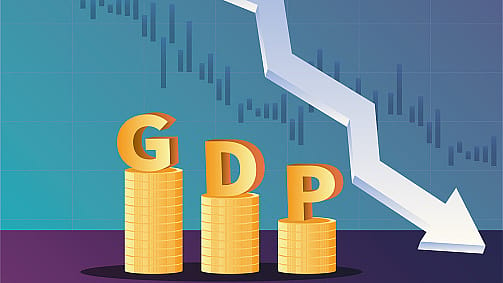World Bank cuts India's FY24 GDP growth forecast to 6.3%
ADVERTISEMENT

The World Bank has slashed India's GDP growth forecast to 6.3% for the financial year 2023-24 from 6.6% projected earlier citing lower consumption growth and challenging external conditions.
Rising borrowing costs and slower income growth will weigh on private consumption growth, and government consumption is projected to grow at a slower pace due to the withdrawal of pandemic-related fiscal support measures, the World Bank says in the latest India Development Update, its biannual flagship publication.
The update, however, notes that although significant challenges remain in the global environment, India was one of the fastest growing economies in the world.
"The Indian economy continues to show strong resilience to external shocks," says Auguste Tano Kouame, World Bank's country director in India. "Notwithstanding external pressures, India's service exports have continued to increase, and the current-account deficit is narrowing."
India's overall growth remains robust and is estimated to be 6.9% for the full year with real GDP growing 7.7% year-on-year during the first three quarters of fiscal year 2022-23, says the global financial institution.
Growth was underpinned by strong investment activity bolstered by the government's capex push and buoyant private consumption, particularly among higher income earners, it says.
December 2025
The annual Fortune 500 India list, the definitive compendium of corporate performance, is out. This year, the cumulative revenue of the Fortune 500 India companies has breached $2 trillion for the first time. Plus, find out which are the Best B-schools in India.
Inflation remained high, averaging around 6.7% in FY22-23 but the current-account deficit narrowed in Q3 on the back of strong growth in service exports and easing global commodity prices, says World Bank.
Although headline inflation is elevated, it is projected to decline to an average of 5.2% in FY24, amid easing global commodity prices and some moderation in domestic demand. The Reserve Bank of India's monetary policy committee had hiked the key repo rate to 6.50% in February to tame rising inflation.
"India's financial sector also remains strong, buoyed by improvements in asset quality and robust private-sector credit growth," says the World Bank.
The central government is likely to meet its fiscal deficit target of 5.9% of GDP in FY24 and combined with consolidation in state government deficits, the general government deficit is also projected to decline, it says, adding that the debt-to-GDP ratio is projected to stabilise.
On the external front, the current account deficit is projected to narrow to 2.1% of GDP from an estimated 3% in FY23 on the back of robust service exports and a narrowing merchandise trade deficit, according to the World Bank.
"Spillovers from recent developments in financial markets in the US and Europe pose a risk to short-term investment flows to emerging markets, including India," says Dhruv Sharma, senior economist, World Bank, and lead author of the report.
The World Bank expects global growth in 2023 to slow to 1.7% from 3% expected six months ago. Global growth is slowing sharply in the face of elevated inflation, higher interest rates, reduced investment, and disruptions caused by Russia's invasion of Ukraine, according to the World Bank's Global Economic Prospects report released in January.
